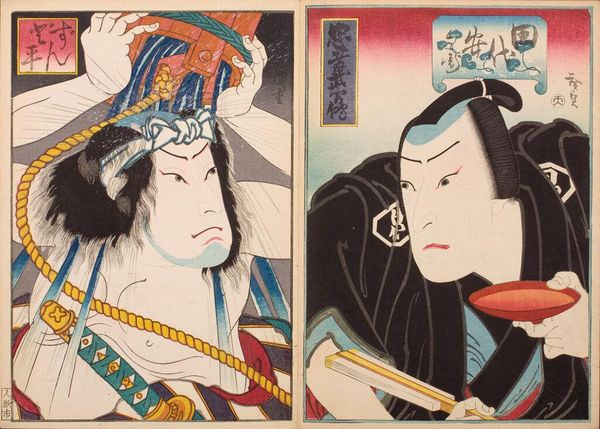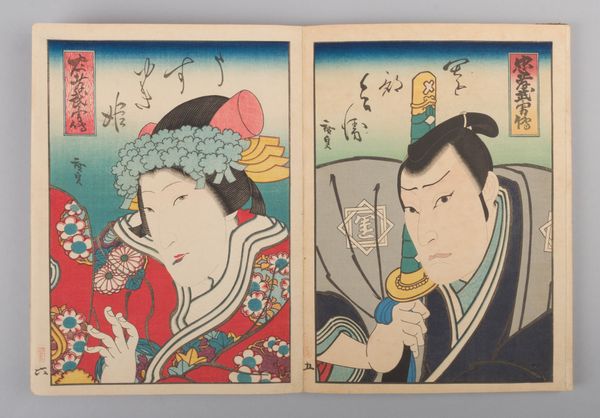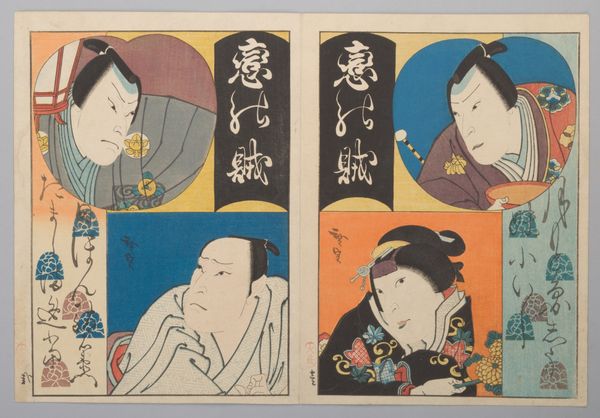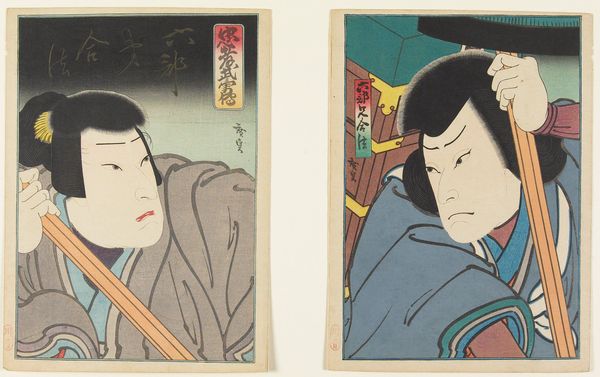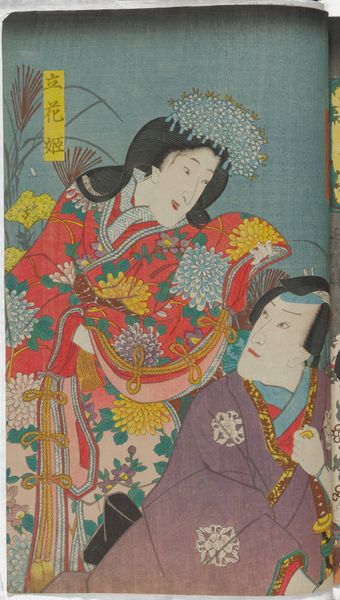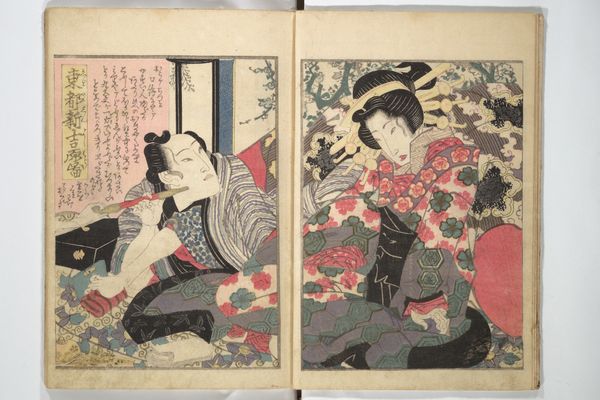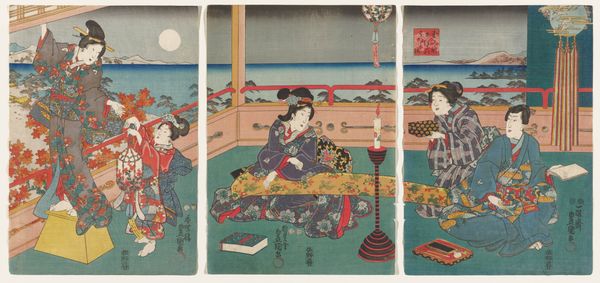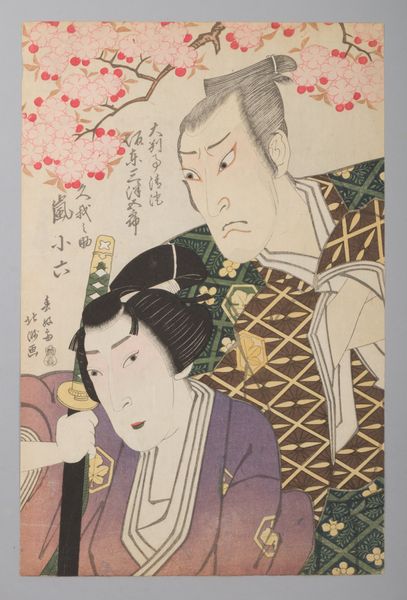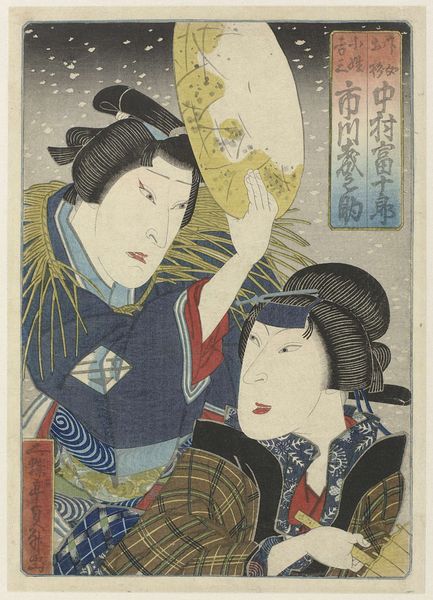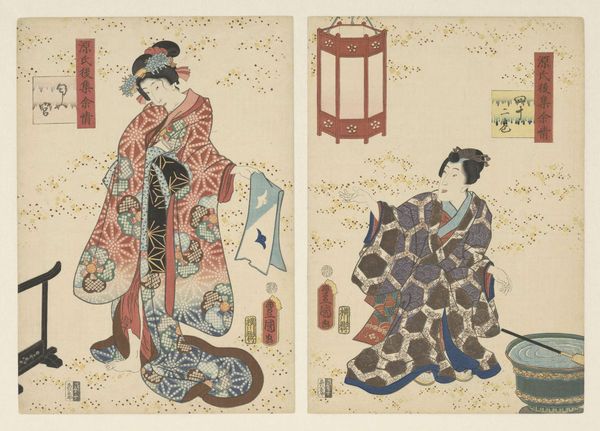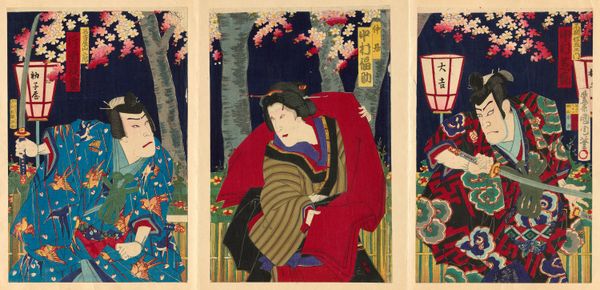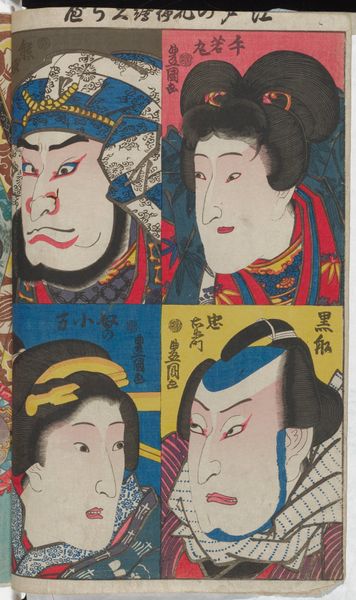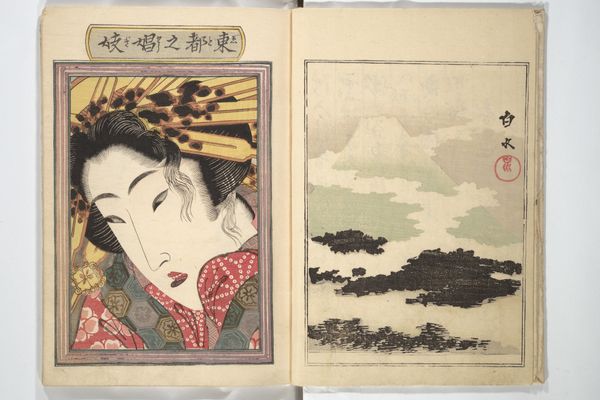
Kabuki Actors Onoe Kikugorō III as Shizuka Gozen and Nakamura Utaemon III as Kitsune Tadanobu, in the play Yoshitsune senbon zakura (The Thousand Cherry Trees of Yoshitsune) 1830
0:00
0:00
print, woodblock-print
#
portrait
# print
#
asian-art
#
ukiyo-e
#
figuration
#
woodblock-print
#
naive art
#
genre-painting
Dimensions: Vertical ōban; Image (each): 14 1/2 × 9 3/4 in. (36.8 × 24.8 cm)
Copyright: Public Domain
This diptych was made by Ryūsai Shigeharu, sometime in the first half of the 19th century, using woodblock print techniques. It depicts two Kabuki actors in character. Kabuki emerged in Japan during the Edo period as a popular, and sometimes controversial, form of entertainment. Because of the Tokugawa government’s strict class system, Kabuki was one of the few places where members of different social classes could mingle. As such, it was heavily regulated. Woodblock prints of Kabuki actors became a popular way to disseminate images of favorite performers and plays, helping to fuel the Kabuki craze of the time. Here, Shigeharu skillfully captures the likenesses and the stylized makeup of Onoe Kikugorō III and Nakamura Utaemon III, in their roles in “Yoshitsune senbon zakura.” The cherry blossom motif in the background alludes to the play's themes of beauty and transience. To gain a fuller understanding of the Edo-period Kabuki theatre, research can be done on the prevailing social and economic conditions. It is this kind of approach that helps reveal the depth and complexity of works such as this.
Comments
No comments
Be the first to comment and join the conversation on the ultimate creative platform.
